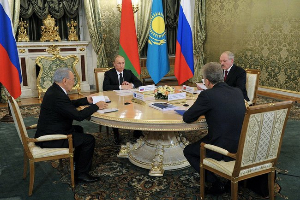Central Asia's Integration Takes One Step Forward, One Step Back
By Farkhod Tolipov
January 26, 2021, the CACI Analyst
The third Consultative meeting of the five presidents of the Central Asian countries was scheduled for October 2020 to be held in Bishkek, the capital of Kyrgyzstan. However, it was postponed to take place in another country – Turkmenistan in 2021. This surprising delay raised concern about the reluctance of Central Asian leaders to reinvigorate the process of regional integration and about invisible geopolitical forces that slow it down. Explanations for the delayed meeting unconvincingly referred to the COVID-19 pandemic and its coincidence with disturbances in Kyrgyzstan in a situation where serious steps toward regional integration are urgently needed.

Central Asian Union and the Obstacles to Integration in Central Asia
By Nurzhan Zhambekov (01/07/2015 issue of the CACI Analyst)
After the fall of the Soviet Union, the two largest Central Asian states of Kazakhstan and Uzbekistan took the initiative for Central Asian integration. In January 1994 an agreement was signed in Tashkent for the creation of a Central Asian Union, with Kyrgyzstan joining shortly thereafter. This marked the start of Central Asia’s integration process, aiming to develop and implement projects to deepen economic integration. Today, the idea of Central Asian integration is considered dead, despite numerous attempts primarily by Kazakhstan to revive it. The internal differences between Central Asian states, and their subjection to the influence of external powers, has made the prospect of regional integration increasingly remote.





 Silk Road Paper S. Frederick Starr,
Silk Road Paper S. Frederick Starr,  Book Svante E. Cornell, ed., "
Book Svante E. Cornell, ed., "